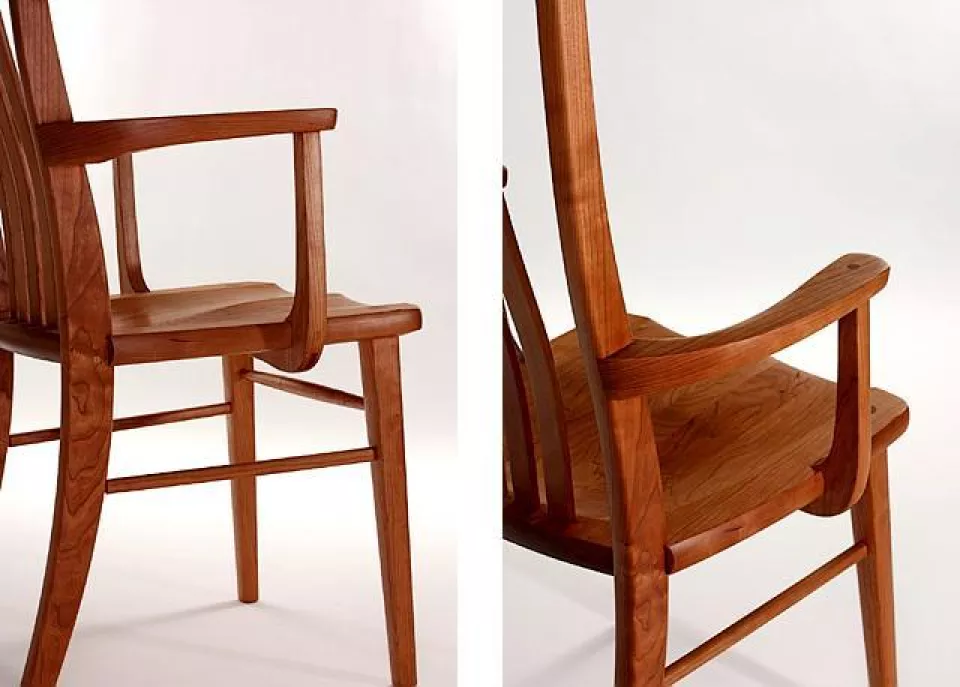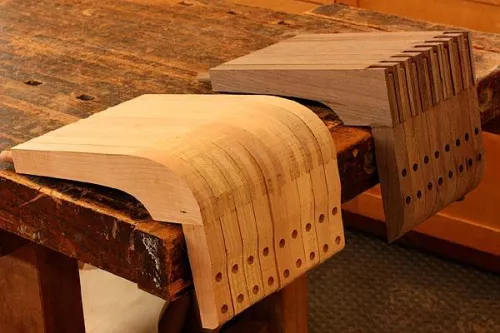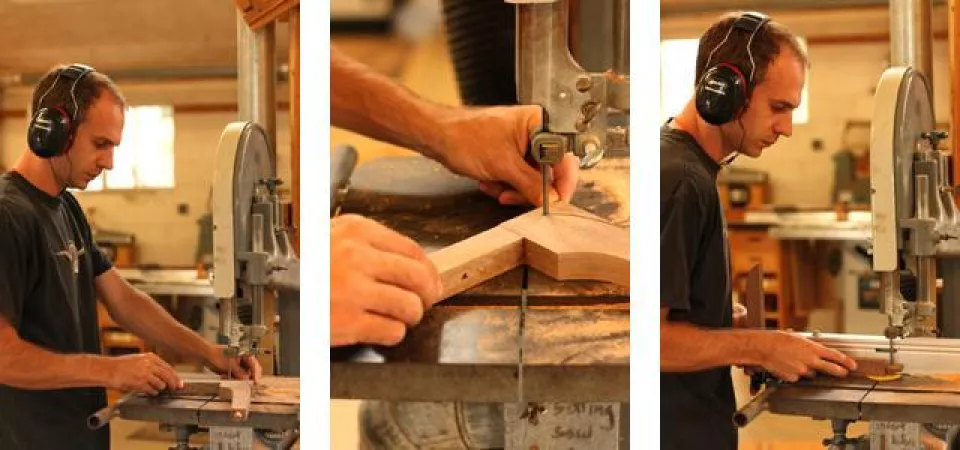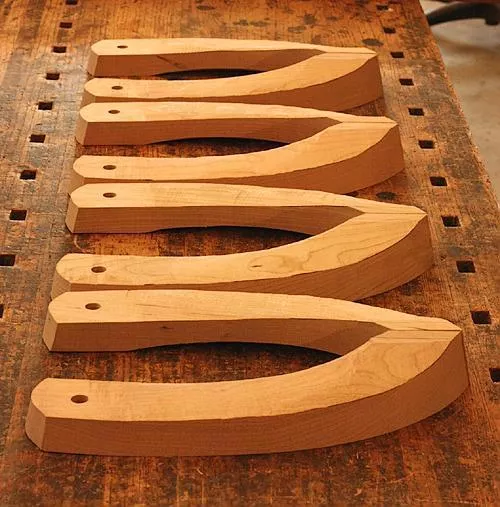To reach elbows and forearms, the tops of dining chair arms need to be about 9” above the seat. This puts the top of the arms about 27” off the floor. The clearance under the apron of a dining table is about 25.” Dining chair arms high enough to catch elbows won’t fit under aprons.
What is a maker to do?
If the chair arms extend to the front of the chair to be fastened to the front legs, then they must be lower than 24” or so — making them too low for most elbows and to my mind, worthless. We chose to make the arms shorter in length, permitting the chair to be drawn close to the table, while still performing the useful work of an arm chair — supporting the arms.

To secure the arms, we make arm supports: right angle braces made rigid by a bridle joint. The photo below shows two sets of arm supports on the bench, with the bridle joint visible. The walnut supports haven’t been cut to shape on the little bandsaw. The cherry ones have. Note the tenons on the end of the supports. The tenons pass through the arms and are wedged.

In the two photos to the left, Austin cuts an arm support to shape. In the one on the right, he cuts a kerf in the tenon to receive a wedge.

To cut our dining chair arms to shape on the bandsaw requires a sculptor’s eyes and a surgeon’s hands — another story.

